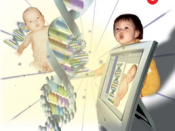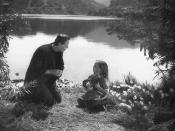Human cloning is a prospect that is no longer left to the realm of science fiction novels; it is rather a modern possibility. In 2002 President Bush commented that, "Human cloning has moved from science fiction into science" (Moen). The concept of cloning was introduced in 1903, when plants were the first organism to be cloned. Cloning humans has just recently become a possibility that seems much more realistic.
According to the Office of Public Health Genomes, cloning is described as, "using specialized DNA technology to produce multiple, exact copes of a single gene or other segment of DNA to obtain enough material for further study" (Public Heath Genomes). Cloning techniques have been in use for centuries, not only by humans, but by nature. Nature has been cloning organisms for billions of years. There are three different types of cloning methods, which include: DNA cloning, reproductive cloning, and therapeutic cloning.
Recombinant DNA technology or DNA cloning has been around since the 1970's. DNA cloning is the process of transferring a portion of DNA from one organism to a self-replicating genetic element. In order to "clone a gene a DNA fragment containing the gene of interest is isolated from chromosomal DNA using restriction enzymes and then united with a plasmid that has been cut with the same restriction enzymes" (HGP). When the DNA is combined it is known as, recombinant DNA molecule.
The second type of cloning, reproductive cloning is a used to produce the same nuclear DNA as another animal. This is a process is called somatic cell nuclear transfer. This is a process when genetic material from the "nucleus of a donor adult cell to an egg whose nucleus material has been removed. The reconstructed egg containing the DNA from a donor cell must be treated with chemicalsâ¦.


